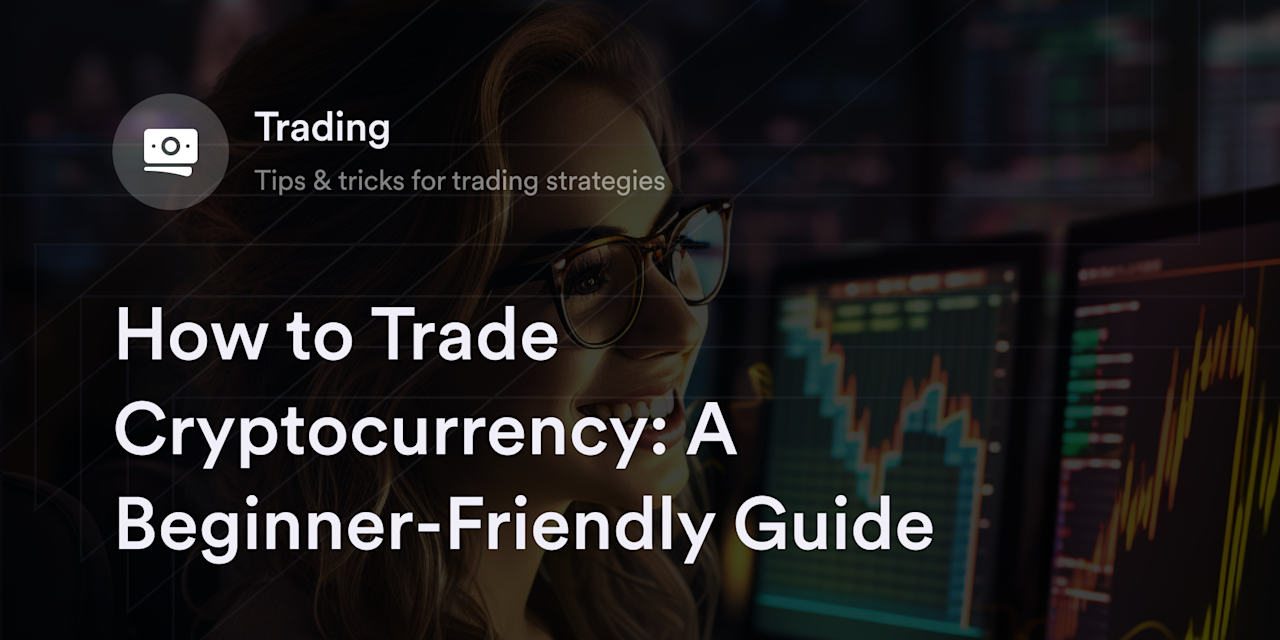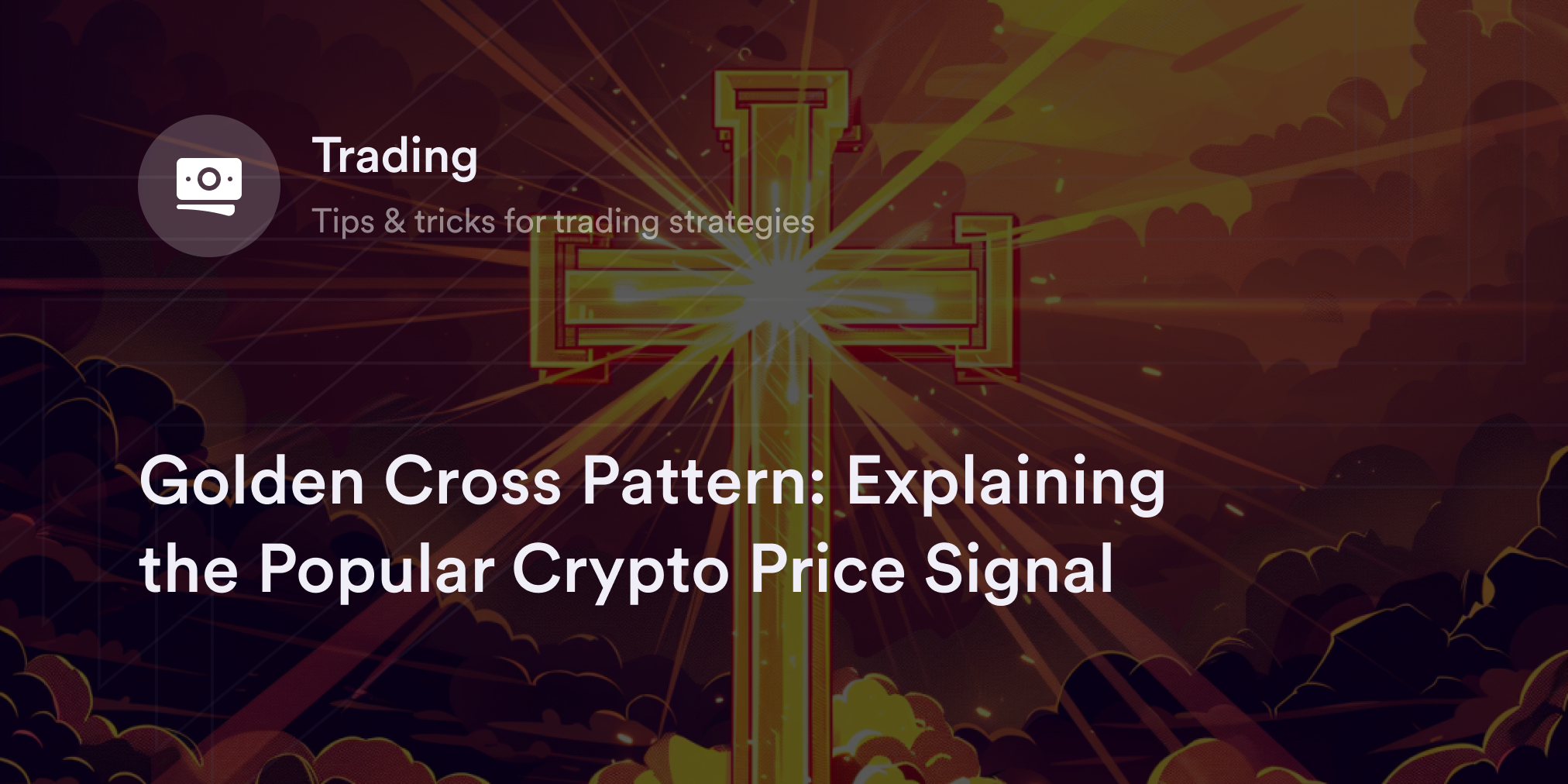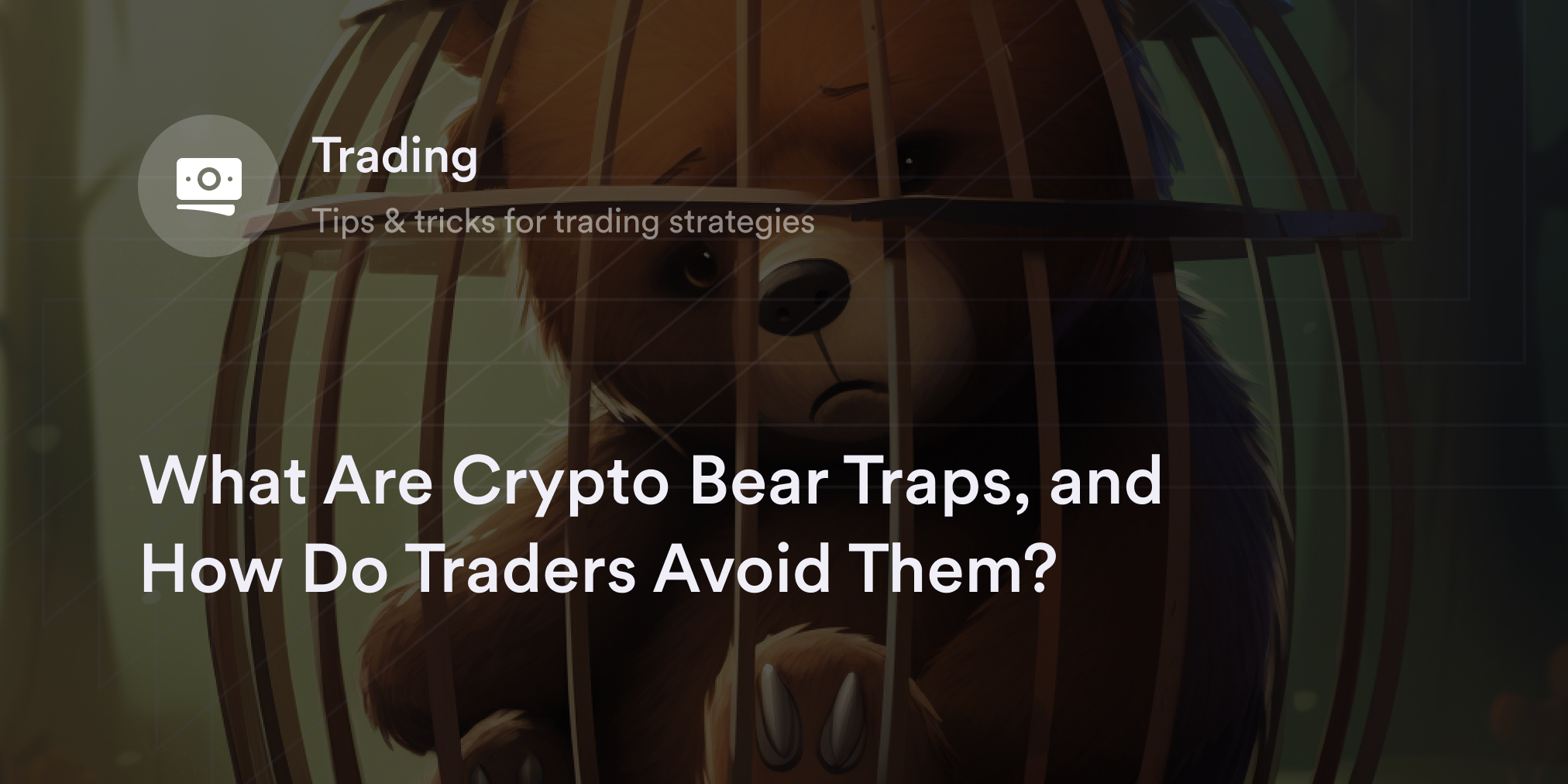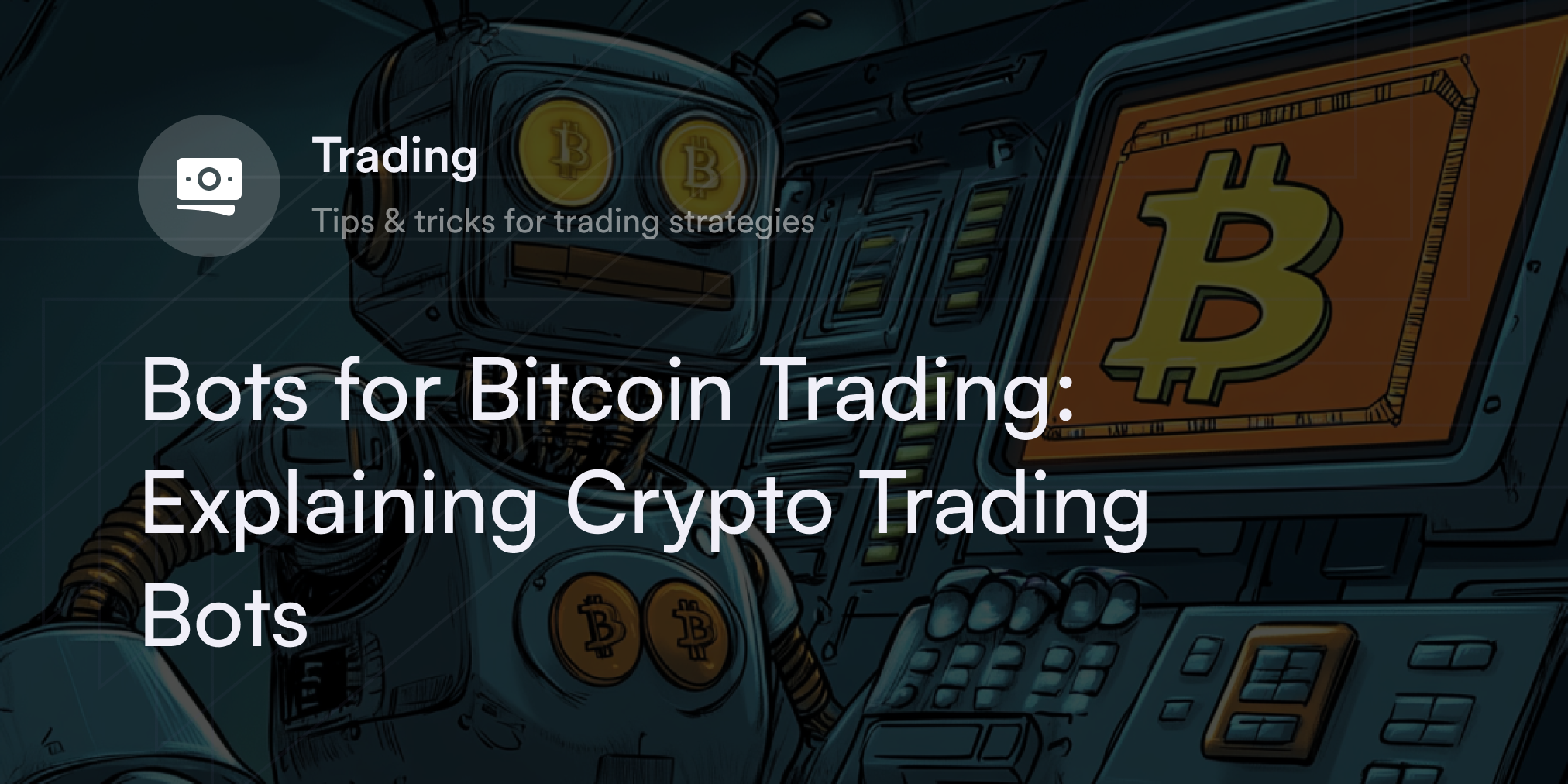
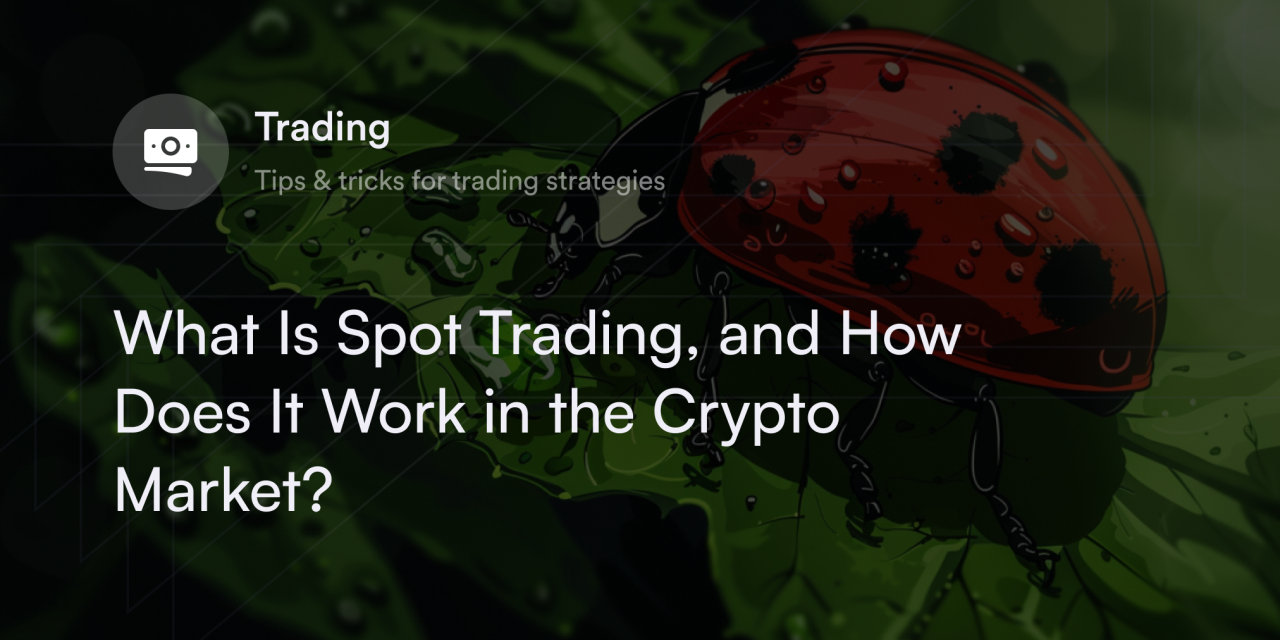

First-time crypto traders quickly discover there's a plethora of ways to dive into the virtual currency market.
As cryptocurrency exchanges compete to attract new traders, more platforms are offering diverse product categories and advanced order types. Despite the explosion of options in the crypto trading sector, the spot market remains the top choice for many traders—especially those new to trading digital assets. In fact, ever since the 2021 crypto bull market, monthly trading volume in the crypto spot market frequently surpasses the $400 billion mark..
Despite this popularity and the spot market being a significant part of the crypto economy, it may not be the ideal choice for every trader. In this guide, we’ll explain what spot trading is in crypto, how to use it, and when it makes sense to use it.
What is a Spot Market in Crypto?
The cryptocurrency spot market lets traders directly exchange virtual currencies at their real-time average market prices (aka spot prices). Traders use cash or crypto in their accounts to buy or sell digital assets, and their transaction is immediately settled on-chain. When people trade on the spot market, they literally own whichever cryptocurrency they purchase (e.g., Bitcoin or Ethereum), and they’re free to store or spend it as they choose.
For example, spot traders have the option to keep their cryptocurrency in a self-custodial wallet, exchange it for other tokens, or use it in decentralized applications (dApps). It’s also possible to send spot cryptocurrencies to a friend’s crypto wallet or a merchant who accepts digital assets.
How Does Crypto Spot Trading Work?
Spot traders typically use crypto exchanges to submit orders for their preferred cryptocurrencies, but not all platforms use the same procedures. Whether traders use a centralized or decentralized exchange determines how they access digital assets.
Spot Trading on Centralized Crypto Exchanges
On a centralized crypto exchange (CEX), a company like Coinbase or Kraken records every cryptocurrency transaction on a ledger known as an order book and helps match counterparties interested in exchanging cash or cryptocurrency on their platforms. Here’s how to use a CEX:
Start by submitting your personal know-your-customer (KYC) data—such as a driver's license, home address, and full name—to the exchange and await approval.
Once all this is up, link an approved payment method such as a bank number, fintech app, or credit card to fund the account, and place a buy order for a cryptocurrency.
After the transaction clears, you’ll see the cryptocurrency in your account balance, which you can either leave on the platform or transfer it off the exchange to a private digital wallet. Note: If you leave the crypto in your CEX account, only the CEX will hold the secret passcode called the private key to all the cryptocurrency in your wallet, and you’ll have to trust the CEX with your funds. Therefore, CEX accounts are called custodial crypto wallets since the exchange has custody over the cryptocurrency on its site unless traders transfer it to a private wallet.
Spot Trading on Decentralized Crypto Exchanges
Decentralized spot exchanges (DEXs), by contrast, run on top of cryptocurrency networks like Ethereum to provide traders with peer-to-peer (P2P) crypto swaps. Here’s how to use a DEX:
First, you need a compatible self-custodial crypto wallet (i.e., a wallet where you know the private key) to link to the DEX's protocol.
After linking, select the crypto coins or tokens you want to trade, which you’ll directly receive in your wallet.
Although each spot DEX uses distinct algorithms in its software, many popular protocols like Uniswap and PancakeSwap rely on automated market makers (AMMs). Instead of recording transactions in a central order book, AMM spot DEXs use advanced coded programs called smart contracts to automatically register input and output values to send digital assets without an intermediary. AMM DEXs also often rely on specific smart contract programs called liquidity pools, which are like virtual vaults filled with cryptocurrency from depositors. In exchange for letting traders use the cryptocurrency in these pools, liquidity pool depositors (aka LPs) receive a percentage of trading fees.
What Are the Pros and Cons of Spot Trading?
The simplicity of spot trading makes it an attractive choice for traders of all skill levels, but it doesn't offer the flexibility of some more advanced trading options. As you gain more experience, you may find spot trading site features are too limited for your goals.
Pros of Crypto Spot Trading
Straightforward and readily available: The concept of spot trading is easy to understand for beginners, and it's one of the most accessible options with dozens of high-profile spot crypto exchanges. Generally, people new to crypto trading have the easiest time starting with spot trading thanks to its simple format and availability.
Direct access to digital assets: When traders buy cryptocurrencies on a spot exchange, they get the literal coins or tokens in their account. This is important for traders who want control over their crypto assets in a private account or use cryptocurrencies to buy goods, transfer value to other crypto users, or explore web3 opportunities like the decentralized finance (DeFi) or non-fungible token (NFT) markets.
No extra risk from borrowed funds: Unlike trading on margin, crypto spot traders don’t need to borrow funds to complete transactions. While this limits a spot trader's potential capital exposure, it can also eliminate the risk of losing more money than they set aside for trading. Since spot traders use private capital in their accounts, they can only lose what they choose to put into the market and never feel compelled to sell crypto to cover a margin call.
Cons of Crypto Spot Trading
Limited profit potential: Typically, traders only use the available capital in their account to buy and sell cryptocurrency on the spot market. Although it’s still possible to artificially increase a position size with borrowed funds or leverage, this feature isn’t the hallmark of spot trading, and it’s not as straightforward compared with derivative products. Therefore, traders who want to increase their profit potential tend to prefer the flexibility of financial vehicles like perpetuals.
Less trade customizability: Besides high-risk short-selling strategies, there's no way to profit from cryptocurrency price declines on spot exchanges. Traders often turn to synthetic products like options, futures, and perpetuals for greater flexibility when setting up trading strategies, especially during market downturns (aka bear markets).
Responsible for securing digital assets: When traders buy virtual currencies on a spot exchange, they literally hold cryptocurrencies in their accounts. Because of this, users have to be cautious with how they store their crypto. Some CEXs have misallocated user funds and self-custody can fall victim to hacks or user error. Anyone buying cryptocurrencies on the spot market should know the basics of transferring crypto, setting up virtual wallets, and basic safety features like two-factor authentication (2FA) before starting.
Spot Trading Versus Crypto Derivatives: What's the Difference?
Crypto derivatives are synthetic assets that give traders price exposure to digital assets without transferring virtual currencies. Unlike crypto spot trading, users who swap derivatives exchange paper contracts representing the underlying value of a cryptocurrency without literally trading that asset.
For example, crypto futures contracts require buyers and sellers to exchange a crypto asset at a particular price on a specific expiry date. Even if the market value for a cryptocurrency is different from the agreed-upon rate in the futures contract, the futures buyer and seller must settle their trade at expiration. Similarly, crypto options allow traders to buy and sell crypto, but options buyers aren't obligated to exercise their right to buy a cryptocurrency at a specific price at or before expiration.
Because crypto derivatives are paper contracts rather than cryptocurrencies, traders don't need to worry about storing them in private wallets. Customizing derivatives positions for short-term trade setups is also simple, especially if traders want to profit from a price decline. Some cryptocurrency holders deliberately take negative positions on their portfolios during bear markets to hedge the value of their long-term cryptocurrency holdings.
What is the OTC Spot Market in Crypto?
Short for over-the-counter, OTC is another style of spot trading where two traders exchange digital assets between private accounts. This means instead of placing buy and sell orders on an exchange's public order books, OTC traders agree on the terms and conditions of their sale privately and exchange cash or crypto directly with each other.
Often, cryptocurrency traders with significant holdings (aka whales) use OTC trading services to swap high volumes of virtual currencies without triggering sudden supply shocks or volatile price fluctuations. Plus, OTC traders have the flexibility to negotiate the price they are willing to settle for, even if it's above or below a cryptocurrency's current market value. On the downside, since OTC trades take place off the record, there's a greater risk that one trading partner won't fulfill their end of the bargain (aka counterparty risk).
To improve trust in the OTC market, some crypto exchanges like Gemini and Kraken serve as unbiased third-party intermediaries to confirm OTC transactions. Just remember that many professional OTC trading desks have high minimum volume requirements, making it difficult for small crypto traders to use this service.
Explore Crypto Perpetuals Trading on dYdX
Even if traders enjoy buying and selling on the spot market, there are many advantages to adding derivatives to a crypto portfolio. For example, perpetual contracts make it easy for eligible crypto traders to hedge long-term positions and diversify their digital asset exposure.
Want to learn more about how crypto perpetuals work? Visit dYdX Academy for more detailed guides on cryptocurrencies and trading techniques. Also, don't forget dYdX offers eligible traders a low-fee decentralized exchange for crypto perpetual contracts. Learn about dYdX's latest products and services on our official blog, and eligible traders can start trading on dYdX today.
Disclosures
The content of this article (the “Article”) is provided for general informational purposes only. Reference to any specific strategy, technique, product, service, or entity does not constitute an endorsement or recommendation by dYdX Trading Inc., or any affiliate, agent, or representative thereof (“dYdX”). Use of strategies, techniques, products or services referenced in this Article may involve material risks, including the risk of financial losses arising from the volatility, operational loss, or nonconsensual liquidation of digital assets. The content of this Article does not constitute, and should not be considered, construed, or relied upon as, financial advice, legal advice, tax advice, investment advice, or advice of any other nature; and the content of this Article is not an offer, solicitation or call to action to make any investment, or purchase any crypto asset, of any kind. dYdX makes no representation, assurance or guarantee as to the accuracy, completeness, timeliness, suitability, or validity of any information in this Article or any third-party website that may be linked to it. You are solely responsible for conducting independent research, performing due diligence, and/or seeking advice from a professional advisor prior to taking any financial, tax, legal, or investment action.
You may only use the dYdX Services in compliance with the dYdX Terms of Use available here, including the geographic restrictions therein.
Any applicable sponsorship in connection with this Article will be disclosed, and any reference to a sponsor in this Article is for disclosure purposes, or informational in nature, and in any event is not a call to action to make an investment, acquire a service or product, or purchase crypto assets. This Article does not offer the purchase or sale of any financial instruments or related services.
By accessing this Article and taking any action in connection with the information contained in this Article, you agree that dYdX is not responsible, directly or indirectly, for any errors, omissions, or delays related to this Article, or any damage, injury, or loss incurred in connection with use of or reliance on the content of this Article, including any specific strategy, technique, product, service, or entity that may be referenced in the Article.

